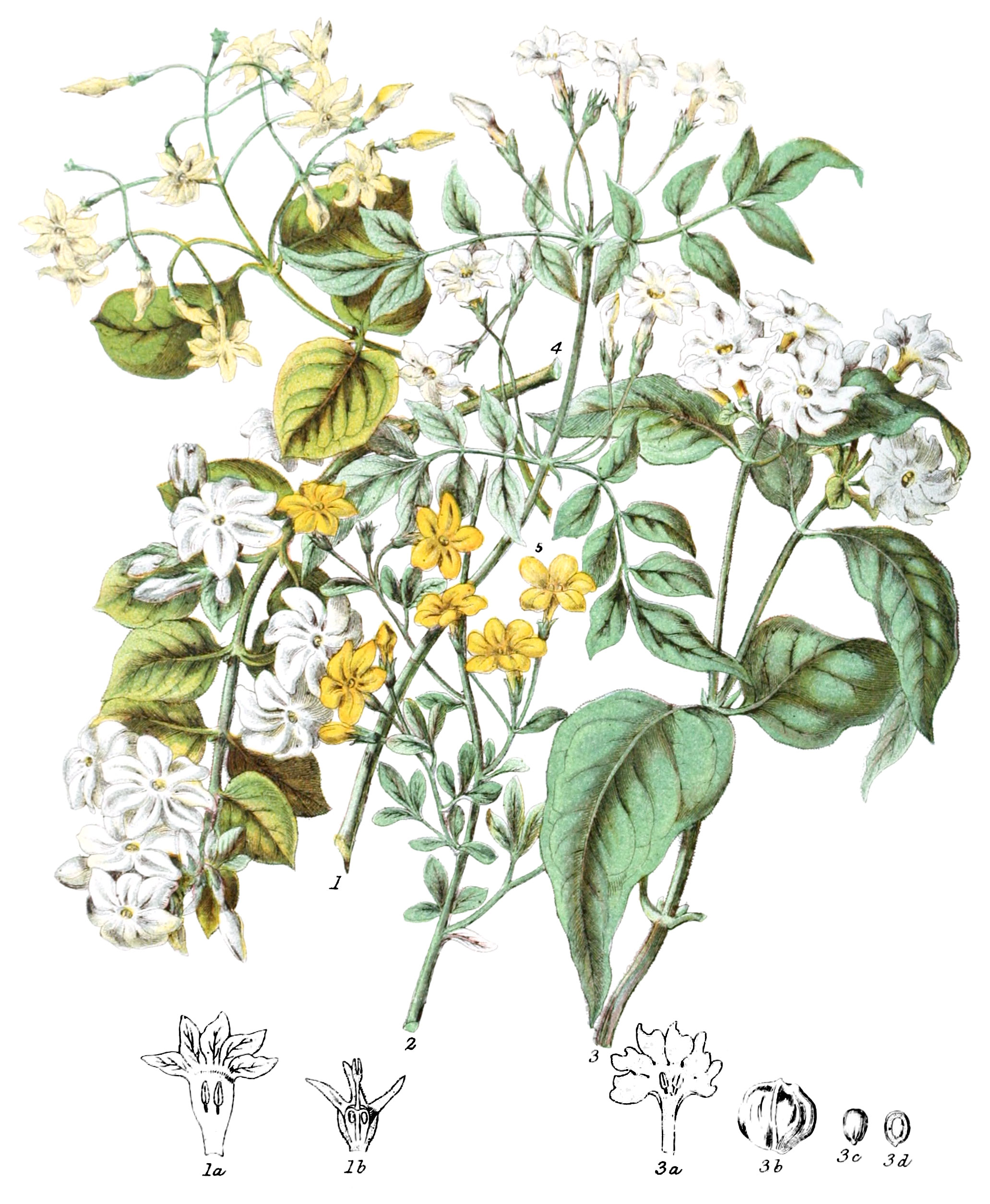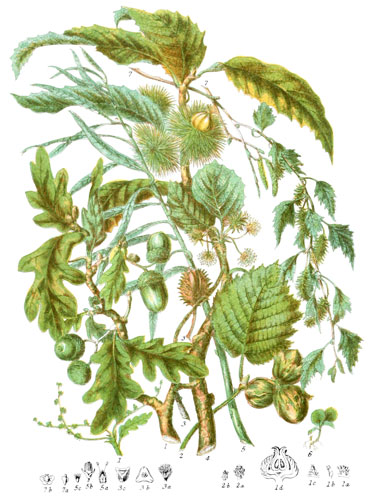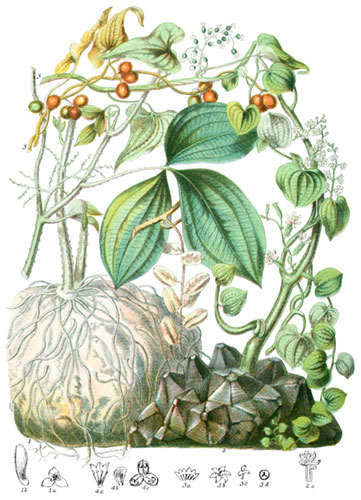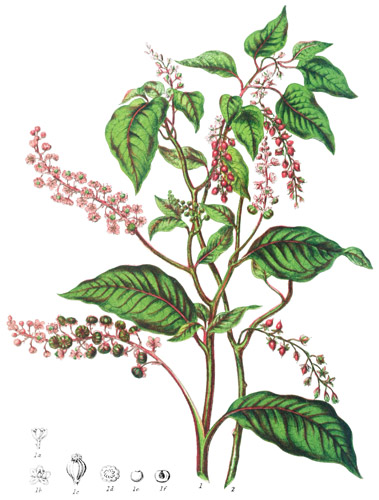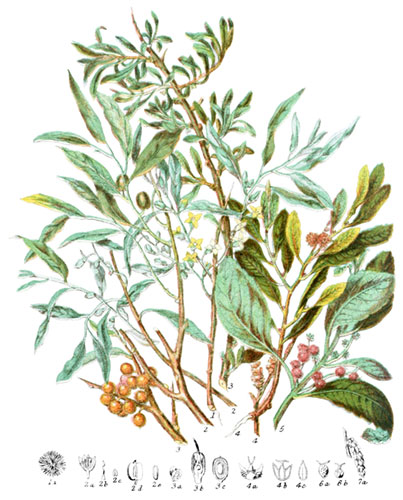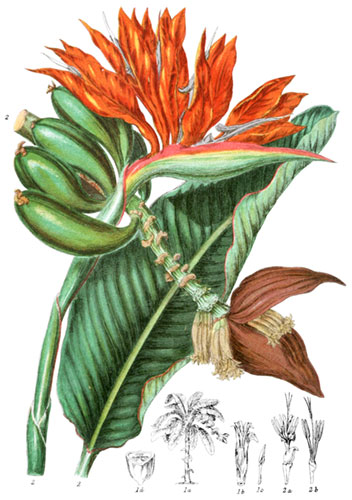Key characteristics
Shrubs, often with a twining stem. The leaves are opposite or alternate, mostly compound, in threes, or pinnated with an odd leaflet, sometimes they are simple; the leaf-stalks are usually jointed. The flowers grow on opposite stalks, or in small spreading clusters; the calyx has from five to eight divisions or teeth, and is persistent. The corolla is of one petal, attached to the base of the ovary, tubular below, salver-shaped at top, and parted into from five to eight segments, which rest upon each other, and are twisted or valvae in the bud. The stamens are two, arising from the corolla, enclosed within its tube. The ovary is destitute of a disk, is two-celled, two-lobed, with from one to four ovules in each cell; the style is single, the stigma two-lobed; the fruit is either a berry or a capsule. The seeds have no albumen, or very little, their outer covering sometimes membranous.
This Tribe has affinity with the Olive tribe; the fruit indicates a connexion with Verbenaceæ.
A fragrant oil is contained in the flowers.
Select plants in this order
Not all plants listed are illustrated and not all plants illustrated are listed.
- Jasminum, the type of this Tribe, derives its name from the Arabic, Yasmyn.
- Jasminum officinale (1) is the most common species cultivated in Europe, and a general favourite, from its delicious fragrance. Its origianl country is said to be Georgia and Circassia; it is also a native of the East Indies, grows plentifully in Malabar, and there produces its two-seeded fruit, which is not the case in this country. Gerard records that it was in gener covering arbours before the close of the sixteenth century. A highly-scented essential oil is extracted from the flowers of this species, and also from those of J. grandiflorium and J. adoratissimum.
- J. Sambac is one of the most odoriforous, much esteemed by the Arabs and other Eastern nations; the first locality of its introduction to England is said to be the gardens of Hampton Court, where it grew towards the end of the seventeenth century, but was subsequently lost. A few shrubs flouished also in the garden of the Grand Duke of Tuscany, at Pisa, from whence fresh specimens were brought to this country early in the eighteenth century; two varities of this species have double flowers, one corolla within the other, the innermost of all occasionally bearing stamens.
- J. fruticans (2) is one of the first species planted in England; its yellow flowers are not fragrant, but it is of a hardy nature, grows well in sheltered gardens, and bears a black berry.
- J. gracile (5) is one of the beautiful plants which flourish abundantly in the moist climate of Norfolk Isle, in 31° of south latitude.
- J. paniculatum and J. undulatum are climbing species of China, with white flowers.
- J. azoricum of Madeira has yellow flowers.
- Nyctanthes (3) from the Greek for night-flower, is an evergreen shrub, expanding its flowers only during the darkness of night, whence also the specific name of arbor tirstis; it is not often to be seen in English gardens, but is very commonly cultivated throughout India, and grows wild on the lower range of the Himalaya, in several regions, as well as on the banks of the Irawaddy. In the orning, the fragile blossoms lie scattered on the ground, and are collected by the native women, and strung into wreaths, as necklaces, or garlands for the hair. The tubes of the corolla when dried yield an orange dye.
Locations
The plants of this Tribe are chiefly natives of the Tropics of India, abounding in all parts. One species of Jasminum has been found in South America and three species of Bolivaria. A few belong to Africa and the neighbouring islands. New Holland possesses several; two extend into the southern regions of Europe.
Legend
- Jasminum officinale, Common Jasmine. Asia.
- Jasminum ligustrifolium. Flower, opened.
- Section of Ovary.
- Jasminum fruticans, Yellow Jasmine. South Europe.
- Nyctanthes arbor tristis, Night-flowering Nyctanthes. East Indies.
- Flower opened.
- Fruit.
- Seed.
- Section.
- Jasminum hirsutum, Hairy Jasmine. East Indies.
- Jasminum gracile, Slender Jasmine. Norfolk Isle.
Explore more
Posters
Decorate your walls with colorful detailed posters based on Elizabeth Twining’s beautiful two-volume set from 1868.
Puzzles
Challenge yourself or someone else to assemble a puzzle of all 160 botanical illustrations.
